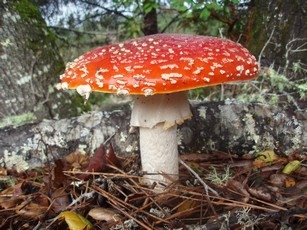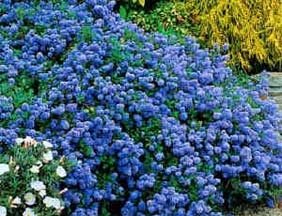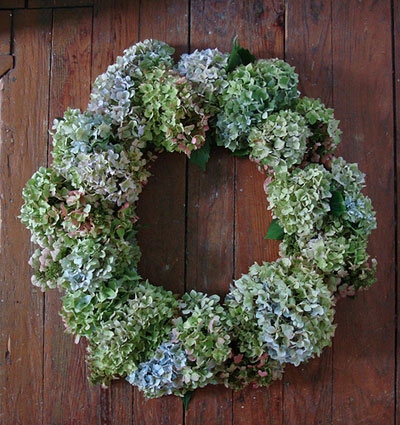Last year I was brave and published my New Year’s resolutions– at least those that pertain to the garden. It’s now the day of reckoning. Let’s see how I did and which ones I’ll keep for 2011. In the garden, as in life, simple changes can make a big difference over a long time. I’m adding a couple new ones that are important, too.
Learn something new every day. Whether it’s something new in the garden or elsewhere, keep learning. I’m starting to learn about local mushrooms. They come up in the most beautiful places. I’m looking forward to the Fungus Fair in January.
Enjoy the simple things. Laugh often. Life is not measured by the breaths we take but by the moments that take our breath away. Everyday is a gift, that’s why we call it the present.
Of the 16 gardener’s resolutions I made last year I can honestly say I achieved half of them.
I did pay more attention to the size that plants grow and believed the tag when it said "spreading habit". But I also found that pruning shears are life savers when you just have to have that new foliage plant that just came out.
I started making garden journal entries in February instead of January as I resolved. But then I tried to make up for it in March, May, June, October, November and December. I missed 5 out of 12 months. I get a "C-".
I added more pollen-producing flowering plants to attract beneficial insects which kept the good guys around longer to eat the bad bugs. And I learned what quite a few of the good guys look like. ( That counts as two resolutions )
I sat in my garden and enjoyed it, not jumping up to rearrange containers. (This one was easy)
I applied to get my little garden certified as a wildlife habitat with the National Wildlife Federation by making sure I provided food sources, water, cover, places to raise young and used sustainable gardening techniques.
I fertilized my perennials a couple of times this year with organic compost and fertilizer instead of just once and boy were they happy. The trees and larger shrubs really only need a light dose once a year so I was good there.
I wore sunscreen everyday. (My doctor wants a hat, too. Maybe this year I’ll wear one.)
The other half of last year’s resolutions are being recycled as they’re still good ones:
I will not buy a new flower, shrub or tree until I have a plan for it in the garden.
I will sharpen and clean my garden tools so they look spiffy and work better.
I will start a worm bin with my kitchen scraps and a compost pile for leaves and plant debris. (I have so many raccoons it’s like a party out there at night but I’m going to come up with a critter-proof solution.)
I will weed regularly- not waiting until they’re so tall they swallow up my gardening tools when I lay them down.
I will accept a few holes in my plants but tour the garden regularly to identify if a problem is getting out of control and I need to break out an organic pesticide.
I will prune my maples, transplant my overgrown containers and divide my perennials when I’m supposed to.
I will plant more things to eat. Edibles anywhere in the garden feed the body and the soul. (This summer was so cold I didn’t have much luck in my partial shade.)
I will stop rationalizing my plant habit is better than gambling, clothes shopping or smoking.
I will do better to practice what I preach in this column.
Happy New Year in 2011 from The Mountain Gardener


 . If your soil is workable, I’d plant most native plants now. Even a winter dormant plant can benefit from the spring growth if it is in the ground for that to happen. Don’t plant in soil that is still thick gooey mud from the rain. Let the soil drain a bit between storms. Most natives put down roots during the cool wet months which prepares them for the warm, dry summer.
. If your soil is workable, I’d plant most native plants now. Even a winter dormant plant can benefit from the spring growth if it is in the ground for that to happen. Don’t plant in soil that is still thick gooey mud from the rain. Let the soil drain a bit between storms. Most natives put down roots during the cool wet months which prepares them for the warm, dry summer. blossoms aren’t completely dry when you harvest them you can finish them off inside. I also tuck hydrangea flowers into my Christmas tree and use some to decorate an evergreen outside.
blossoms aren’t completely dry when you harvest them you can finish them off inside. I also tuck hydrangea flowers into my Christmas tree and use some to decorate an evergreen outside. of your plant, even if damaged, can protect the crown from further freezing. This applies to citrus trees, too. If a perennial like Mexican bush sage froze and is now gooey and black, cut the plant down to the ground. It will re-grow come spring from the root system. If the old, dead foliage and stems are not gooey, leave them until after the last frost next spring. They provide an extra degree or two of protection for tender new buds and shoots coming along for next year. This advice applies to all your perennials. And the best part, you don’t have to lift a finger until next year. One last tip: if you do have plants that need covering in a frost, use a blanket, towel or other type of cloth and not plastic. The cold will go right through plastic covering and damage the plant.
of your plant, even if damaged, can protect the crown from further freezing. This applies to citrus trees, too. If a perennial like Mexican bush sage froze and is now gooey and black, cut the plant down to the ground. It will re-grow come spring from the root system. If the old, dead foliage and stems are not gooey, leave them until after the last frost next spring. They provide an extra degree or two of protection for tender new buds and shoots coming along for next year. This advice applies to all your perennials. And the best part, you don’t have to lift a finger until next year. One last tip: if you do have plants that need covering in a frost, use a blanket, towel or other type of cloth and not plastic. The cold will go right through plastic covering and damage the plant..jpg) letide’ bloom right at Christmas time. ‘Chansonette’ is another beautiful variety with rich pink flowers. Sasanqua camellias can tolerate a little more sun than the more common camellia japonicas. They come in a variety or forms from compact shrubs to open vining types that can be espaliered. If you don’t have any of this variety they would make a good addition to your garden.
letide’ bloom right at Christmas time. ‘Chansonette’ is another beautiful variety with rich pink flowers. Sasanqua camellias can tolerate a little more sun than the more common camellia japonicas. They come in a variety or forms from compact shrubs to open vining types that can be espaliered. If you don’t have any of this variety they would make a good addition to your garden.